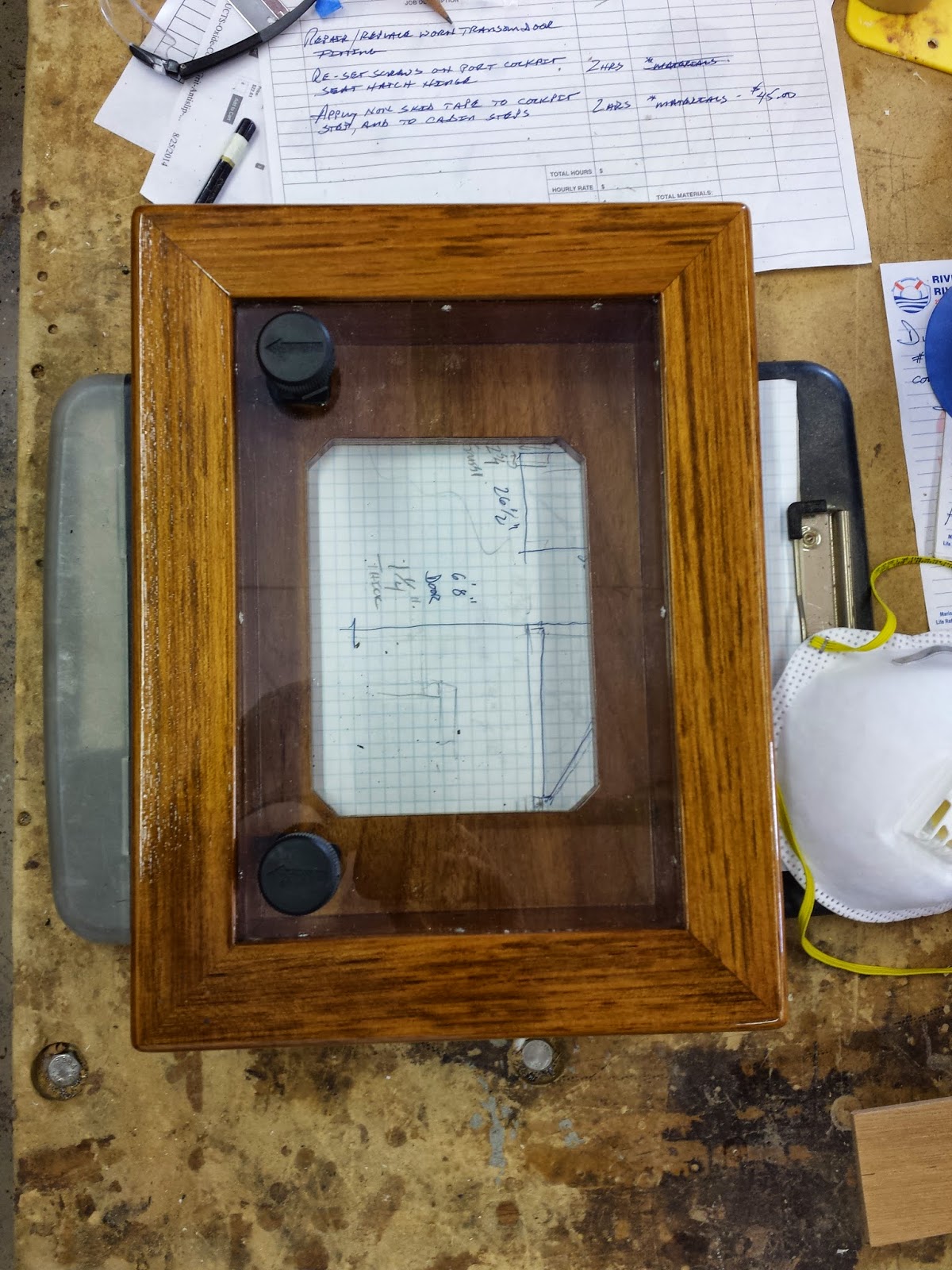We’re on the downhill slide. Sort of.
There’s no engraving in a calendar somewhere which designates
a declared completion date. It’s nothing like that. Instead, what we have is an
agreement of a timeline. We know that
we’d like to have such-and-such job done by such-and-such date, and so on. The
establishment of a timeline is a good thing, but the fact remains there’s still
much to be done. A single small misstep can still rock the proverbial boat.
We have made significant progress. With so much of the work
being done essentially hidden through the myriad of systems which comprise a
modern small sailing yacht, it’s exciting that we can see indications of
progress. We can actually see now the boat Jo Beth was meant to be.
Test fit of headliner panels and battens in the main saloon
The new cabin headliner is nearly finished. Test fitting and
fine tuning of the panels, trim pieces, and battens has been underway. There’s
a smidgen of electrical work left, and a fair amount of mechanical and rigging
work remains; such as the installation of the chainplates, (metal bars which attach the rigging wires to the hull), installation of a deck washdown system, installation of the galley sink and the re installation of the head (toilet), etc. There are also a couple of major parts which need to be ordered for the
sailing rig; things which couldn’t be built and installed until things started
coming together to make Jo Beth a whole boat again. And, the conversion of the quarterberth to a storage locker has to be completed.
The final steps to get the mast and rigging installed are
set to begin this week, provided the weather cooperates. A weak but persistent
area of low pressure has moved into the coastal Georgia region and stalled. The
forecast calls for the system to slowly drift north and east over the coming
days. However, it has brought squally and unsettled weather to the area for much
of the past week. I remarked to Lisa how much the skies looked like those we
used to see in Miami and the Keys; skies I’d seen many a time in the Bahamas. Much
of the work on the decks and bottom will have to wait for clearer weather.
The new engine control panel cover
The weather did provide us some unexpected assistance. The
new engine control panel box, designed to be watertight, turned out to be not
so watertight. This is an important issue to correct. The engine control panel
is located in the cockpit just above the deck, and right at the cabin entrance.
The panel houses the ignition switch, the tachometer and temperature gauges,
and other critical instrumentation. Exposure to water, whether from rain or a
boarding sea, is not good. An early project in the refit was to relocate the
panel and instruments to the cabin interior, but the necessary rerouting and
extensions of wiring, heavy gauge battery cables, etc. proved to be too costly.
So we opted to leave the panel as it was and improve the panel’s protective
housing.
Lisa and I also met last week with our canvas maker, Causa’s
Cushions, to go over the final details for the new interior cushions, order new
pieces for the canvas inventory which we carry aboard, (such as winch covers to
protect the shiny bronze winch drums), and refine the details of our new spray
dodger. A dodger is a canvas windshield of sorts. It keeps spray and rain off
of the crew in the cockpit, protects the main cabin entry companionway from the
weather, and so on. Clear vinyl windows allow for visibility. Jo Beth’s
original dodger had worn severely and while the system as a whole was functional,
it needed a redesign to better suit Lisa and me.
This is a shot of Jo Beth from a few years ago; the structure which resembles a canvas and clear vinyl windshield is the dodger
For those who don’t know us, Lisa and I are quite short.
When we stood on the cockpit deck and looked forward, the rear bar of the
dodger frame, called a ‘bow’, fell right across our line of sight. This meant
we were always stooping to see under the bow, or standing on tiptoes to see
over it. The replacement bow will raise the height of the dodger by 6 or so
inches and greatly enhance our ability to see what’s in front of us. The dodger
frame also lacked handholds, so we’re adding grab rails on each side and on the
back bow. All around, it will make our little future home a safer and more
comfortable place.
Here's a before and after shot of our winches. Thirty years of patina removed with a bit of polish and elbow grease. We'll have canvas covers made to keep them nice and shiny.
So what’s that timeline agreement I mentioned at the start
of this post? Well, we hope to have the mast and rigging installed in a week or
so, have the boat secured and floating at the marina service dock by early
October, get the sea trials conducted, and be back in our home slip in
November.
Of course, more updates are to follow.




